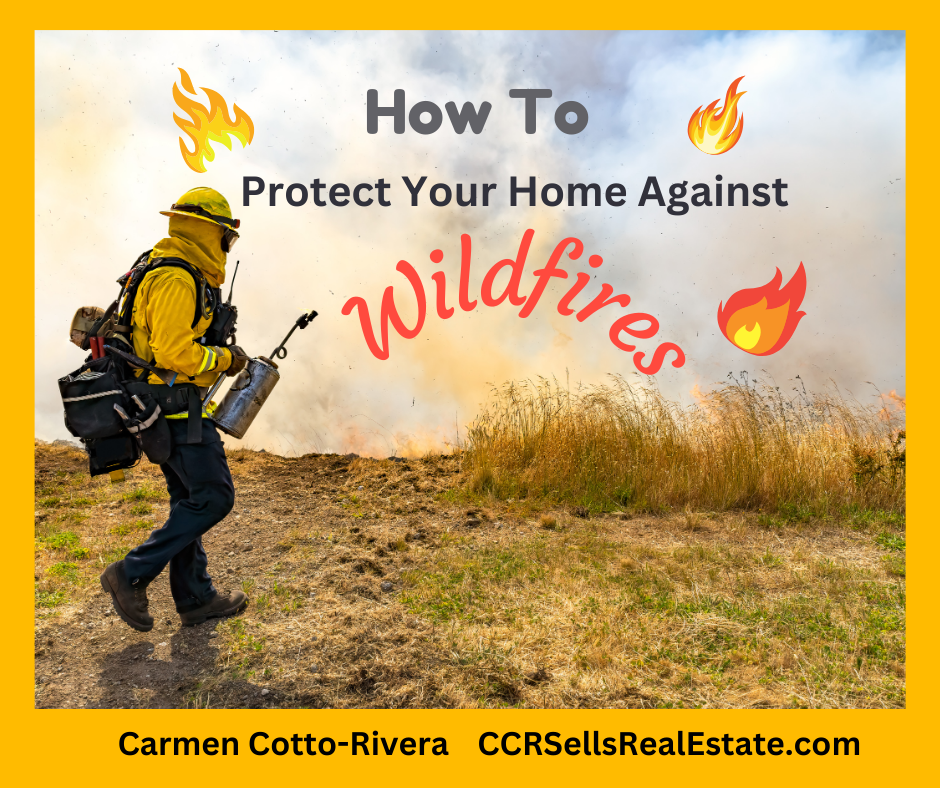
How To Safeguard Your Home Against Wildfires
There’s been a lot of news about wildfires lately, especially the latest in southern California. Even though we live in an area that is not affected as in California, I wanted to put together this article to give you some advice on how to safeguard your home against wildfires. It will provide you with some safety tips and peace of mind on keeping your home safe.
I remember a couple of years ago seeing the smoke effects that traveled from Canada and how there were a couple of fires that broke out in the southern New Jersey wooded pine barrens and felt that is hitting close to home. If there is a prolonged drought in our area, it increases the possibility of wildfire breaking out closer to our homes.
Below is a list of items you can do to safeguard your home.
Identify and Divide The Areas Surrounding Your Home Into Safe Zones
According to the USDA (U.S. Dept of Agriculture), they recommend you divide the area around your home into Home Ignition Zones (HIZ). The HIZ is divided into three zones.
A. Immediate Zone
This is the area from 0 to 5’ from the furthest attached exterior point of the home. This is the most vulnerable zone to embers. Within this zone they recommend that you:
- Clean roofs and gutters of dead leaves and debris that can catch embers
- Replace or repair any loose or missing shingles or roof tiles
- Install 1/8” metal mesh screening through vents in the eaves and exterior attic vents
- Repair or replace damaged or loose window screens and any broken windows. This includes screens or box-in areas below patios and decks with wire mesh. This will prevent debris and combustible materials from accumulating.
- Move any flammable material from wall from wall exteriors (including siding), such as, mulch, flammable plants, leaves, pine needles, and firewood piles, etc.
- Remove anything stored underneath decks or porches.
B. Intermediate Zone
This is the area that is from 5’ to 30’ from the furthest exterior point of the home.
- Clear vegetation from under large stationary propane tanks
- Create fuel breaks with driveways, walkways/paths, patios and decks. A fuel break is creating a clear path through a driveway and paving it with gravel or concrete or maintaining it free of vegetation, which can be flammable. This will help control the fire’s progression and help firefighting.
- Keep lawns mowed to a height of four inches
- Remove vegetation under trees so a surface fire cannot reach the tops.
- Prune trees up to 6’ to 10’ from the ground; for shorter trees do not exceed 1/3 of the overall tree height.
- Trim trees to have at least 18 feet between crowns (or the top part of a tree that has leaves and branches). If they are on a slope, that distance will increase to maintain space.
- If planting trees, make sure the canopy (the layer of branches and leaves that cover the ground when viewed from above) is no closer than 10’ to the edge of the home.
- Tree and shrubs in this zone should be limited to small clusters of a few each to break up the continuity of the vegetation across the landscape.
- The goal here is to keep trees apart so if one catches fire, it will reduce the chances of the surrounding trees catching fire.
C. Extended Zone
This is the area that is from 30’ to up to 200’ out (if still within your property line). The goal here is not to eliminate the fire but to interrupt fire’s path and keep flames smaller and on the ground.
- Dispose of heavy accumulations of ground debris that can accumulate over time
- Remove dead plant and tree material
- Remove small conifers (evergreens or trees with pine needles) growing between mature trees
- Remove vegetation next to storage sheds or other structures within the area
- Trees 30 to 60 feet from the home should have at least 12 feet between the tops
- Trees 60 to 100 feet from the home should have at least 6 feet between the tops.
I hope these guidelines help you to better safeguard your home against wildfires and give you peace of mind if you decide to implement any of them. Not all may apply to your property, but you can work on the ones that can. These guidelines were provided by the National Fire Protection Association (NFPA). If you want more information about these guidelines, you can check out their website www.NFPA.org (Click Here).
If you have any real estate or home maintenance questions, send me an email at ccr@ccrsellsrealestate.com.
Hi, there!
I'm Carmen and I love helping first time home buyers, including Spanish speakers, buyer their first home. I also love helping sellers looking to move up or downsize to their next home. Let me know how I can help you make your real estate goals come true.
Let's Meet
Contact
201-835-5650
921 Pleasant Valley Av
Suite 200
Mt. Laurel, NJ 08054
ccr@ccrsellsrealestate.com
Buyers: tips and advice on buying your first home
My Listings
Sellers: tips on home maintenance and prepping your home for sale
Blog
schedule your free consultation